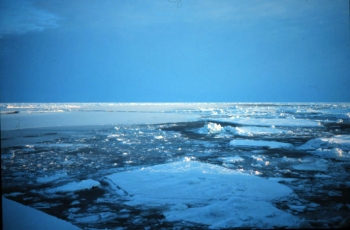NOAA Issues Annual Report Card Outlining Changing Conditions in the Arctic
The Department of Commerce’s National Oceanic and
Atmospheric Administration today announced findings from the annual Arctic Report Card, a
report prepared by an international team of scientists from 14 different
countries. These scientists monitor the rapid changes in the Earth’s northern
polar region say that the Arctic is entering a new state–one with warmer air
and water temperatures, less summer sea ice and snow cover, and a changed ocean
chemistry. This shift is also causing changes in the in the region’s life, both
on land and in the sea, including less habitat for polar bears and walruses, but
increased access to feeding areas for whales. Release | Watch the Arctic Report Card 2011 video
Among the 2011 highlights are:
- Atmosphere: In 2011, the average annual near-surface air temperatures over much of the Arctic Ocean were approximately 2.5° F (1.5° C) greater than the 1981-2010 baseline period;
- Sea ice: Minimum Arctic sea ice area in September 2011 was the second-lowest recorded by satellite since 1979;
- Ocean: Arctic Ocean temperature and salinity may be stabilizing after a period of warming and freshening. Acidification of sea water (“ocean acidification”) as a result of carbon dioxide absorption has also been documented in the Beaufort and Chukchi seas;
- Land: Arctic tundra vegetation continues to increase and is associated with higher air temperatures over most of the Arctic land mass.


